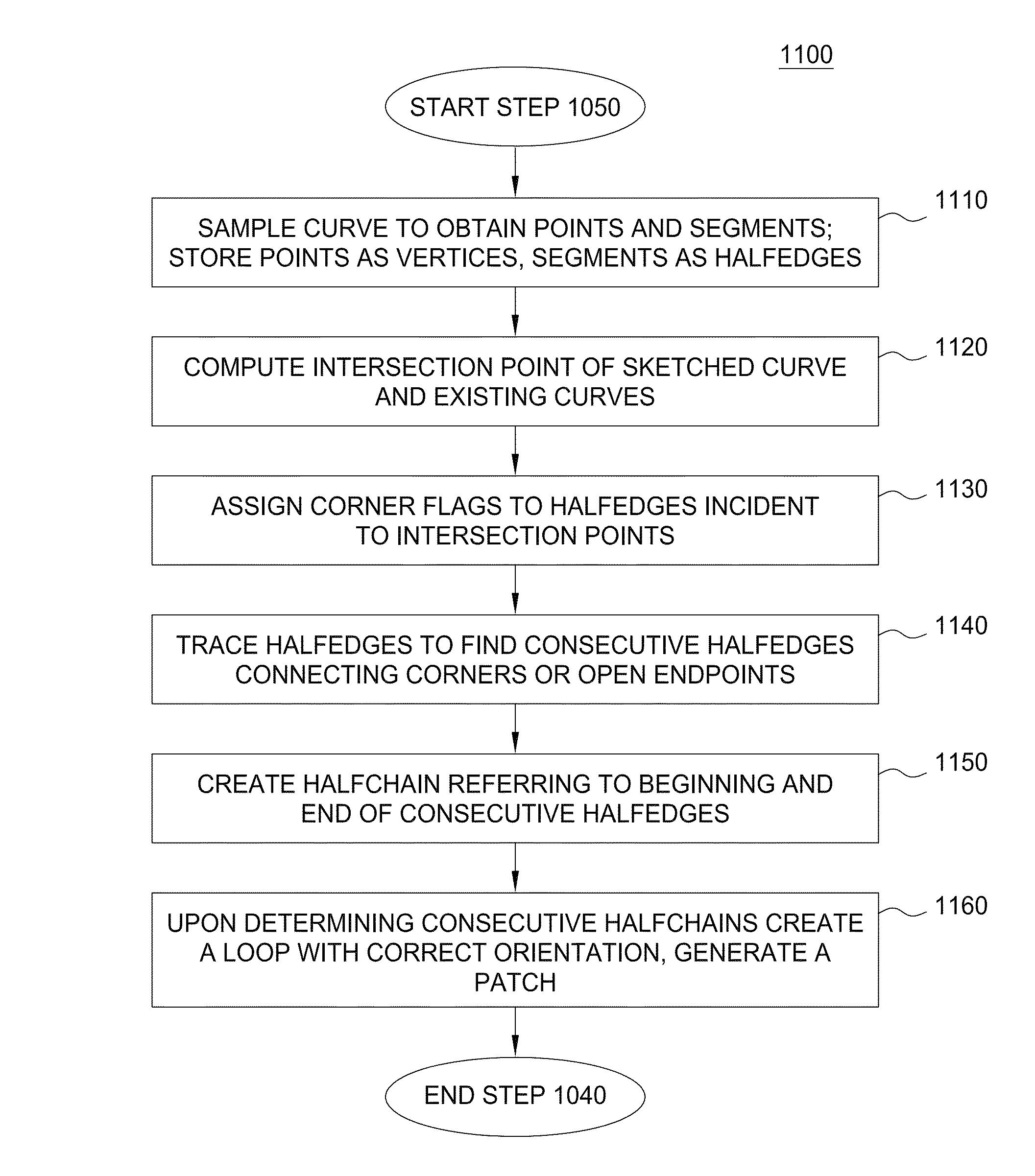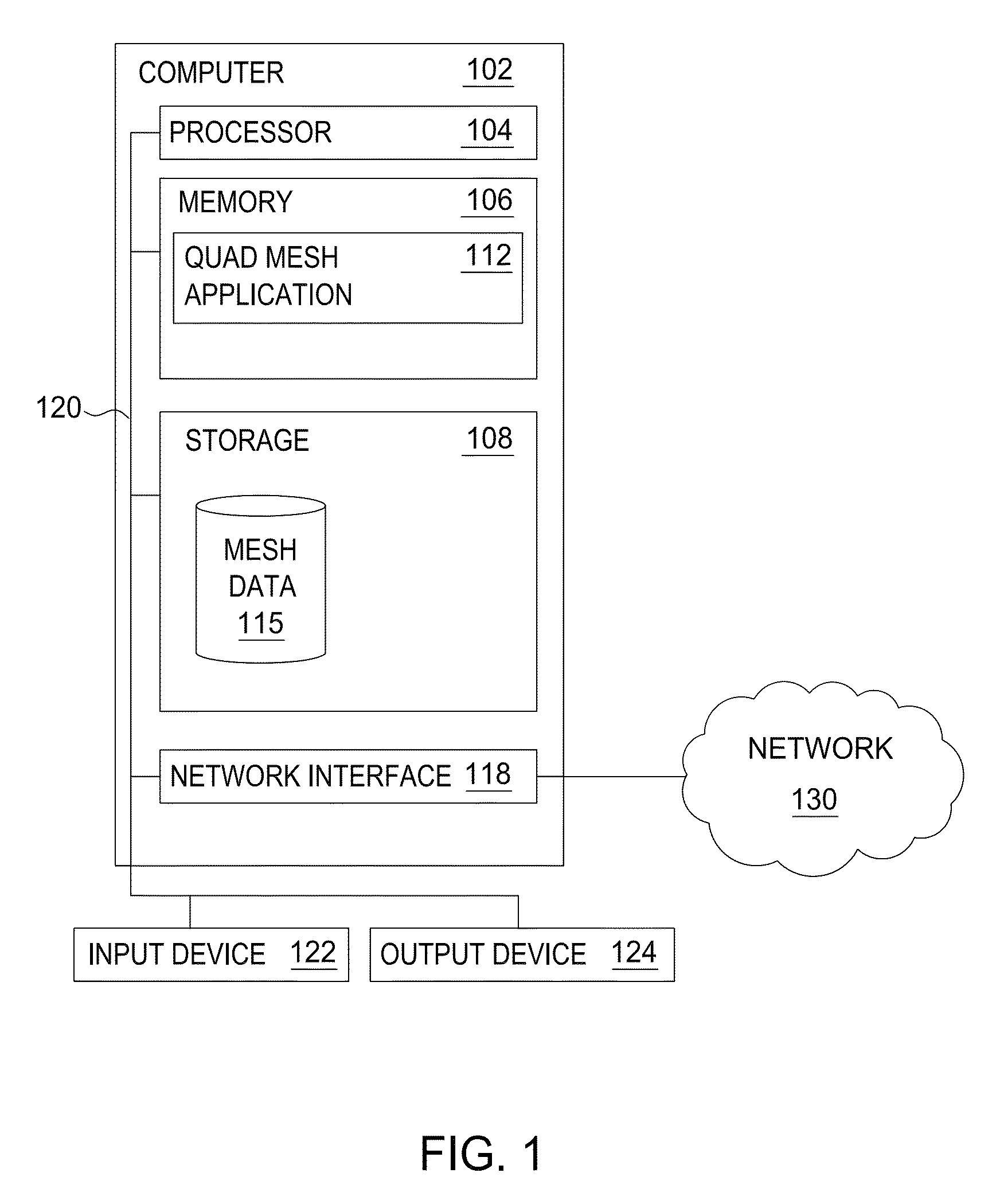Sketch-based generation and editing of quad meshes
a quad mesh and sketch-based technology, applied in the field of sketch-based generation and editing of quad meshes, can solve the problems of not being able to expose to the user, unable to refine, coarsen or otherwise edit a quad mesh only locally without introducing additional singularities, and difficult to optimize the alignment of the quad mesh and the amount and position of singularities
- Summary
- Abstract
- Description
- Claims
- Application Information
AI Technical Summary
Benefits of technology
Problems solved by technology
Method used
Image
Examples
Embodiment Construction
[0021]Embodiments disclosed herein provide an interactive approach to quad remeshing that allows users to sketch a coarse curve network, where (i) every segment of the curve network may become part of an edge of a quad mesh and (ii) every intersection between curves may become a vertex. The interior of every bounded polygon may be meshed to match a user-provided number of edges, while singularities are automatically inserted when needed. The free-form, flexible, and explicitly controlled approach to “sketching” the edge flow described herein is enabled by a representation of the quad mesh that allows a controlled number of singularities in each patch (rather than focusing on patches with regular connectivity inside). This representation of the quad mesh also explicitly controls the number of subdivisions of each patch side. Singularities can also be moved geometrically as well as topologically inside each patch. This approach provides control when desired, as well as simultaneously ...
PUM
 Login to View More
Login to View More Abstract
Description
Claims
Application Information
 Login to View More
Login to View More - R&D
- Intellectual Property
- Life Sciences
- Materials
- Tech Scout
- Unparalleled Data Quality
- Higher Quality Content
- 60% Fewer Hallucinations
Browse by: Latest US Patents, China's latest patents, Technical Efficacy Thesaurus, Application Domain, Technology Topic, Popular Technical Reports.
© 2025 PatSnap. All rights reserved.Legal|Privacy policy|Modern Slavery Act Transparency Statement|Sitemap|About US| Contact US: help@patsnap.com



